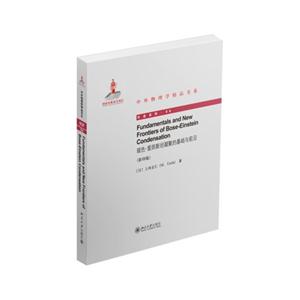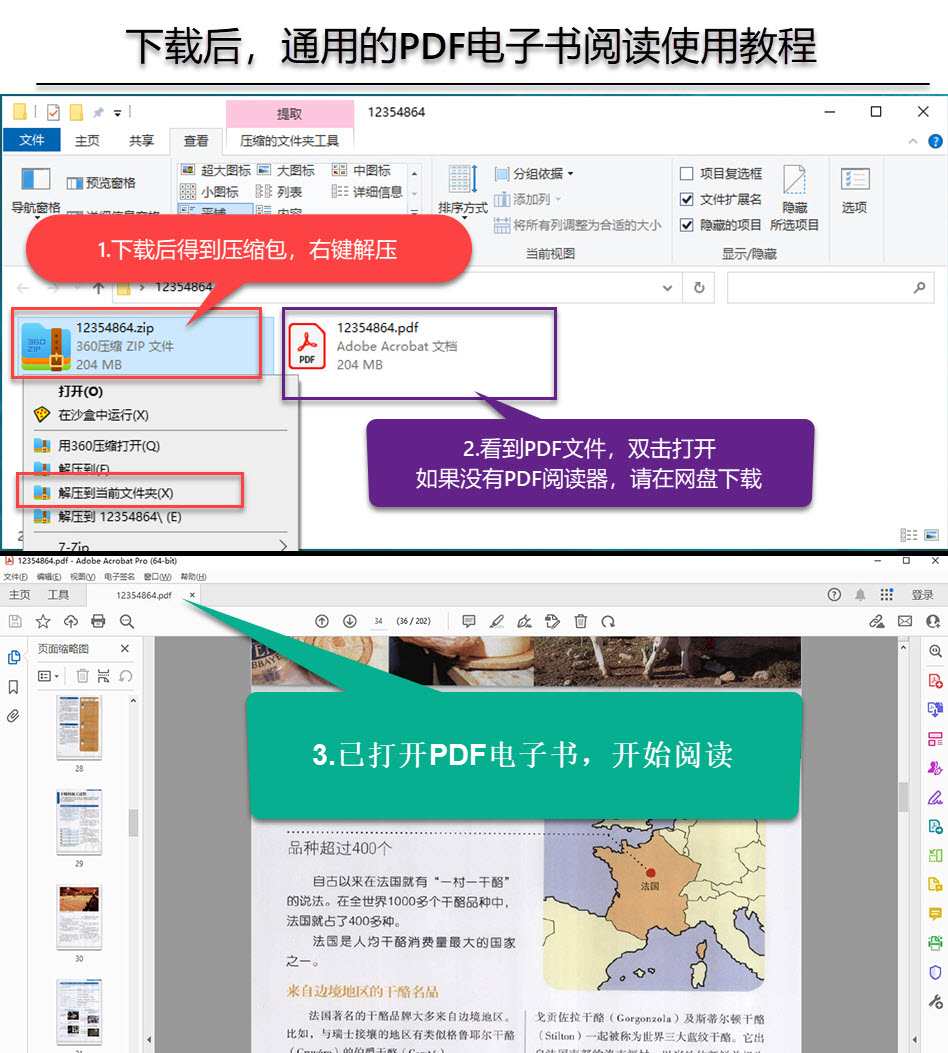玻色-爱因斯坦凝聚的基础与前沿-(影印版)
本书特色
[
《玻色-爱因斯坦凝聚的基础与前沿》首先介绍了玻色-爱因斯坦凝聚(bec)的基本理论。之后,本书讨论了快速旋转bec,旋量和偶极bec,低维bec等近来发展迅速的方向。本书还介绍了平衡或非平衡费米液体超流,包括bcs-bec交叉、幺正气体、p波超流等。本书适合本领域的研究者和研究生阅读。
]
内容简介
[
玻色爱因斯坦凝聚是神奇而富有魅力的物理现象。相关研究已经使多位科学家获得了诺贝尔奖。目前。关于冷原子的研究正蓬勃展开,玻色爱因斯坦凝聚正是其理论基础。本书对于相关领域的研究人员来说是不可错过的佳作。
]
目录
preface v1. fundamentals of bose-einstein condensation 1.1 indistinguishability of identical particles1.2 ideal bose gas in a uniform system 1.3 off-diagonal long-range order: bose system1.4 off-diagonal long-range order: fermi system1.5 u(1)gauge symmetry 1.6 ground-state wave function of a bose system1.7 bec and superfluidity 1.8 two-fluidmodel.1.9 fragmented condensate.1.9.1 two-statemodel.1.9.2 degenerate double-well model.1.9.3 spin-1 antiferromagnetic bec.1.10 interference between independent condensates1.11 feshbach resonance2. weakly interacting bose gas 2.1 interactions between neutral atoms 2.2 pseudo-potentialmethod2.3 bogoliubov theory2.3.1 bogoliubov transformations2.3.2 bogoliubov ground state2.3.3 low-lying excitations and condensate fraction2.3.4 properties of bogoliubov ground state.2.4 bogoliubov theory of quasi-one-dimensional torus.2.4.1 case of bec at rest: stability of bec.2.4.2 case of rotating bec: landau criterion2.4.3 ground state of bec in rotating torus2.5 bogoliubov-degennes (bdg) theory.2.6 method of binary collision expansion.2.6.1 equation of state2.6.2 cluster expansion of partition function2.6.3 ideal bose and fermi gases2.6.4 matsubara formula3. trapped systems 3.1 ideal bose gas in a harmonic potential3.1.1 transition temperature.3.1.2 condensate fraction3.1.3 chemical potential3.1.4 specific heat3.2 bec in one- and two-dimensional parabolic potentials3.2.1 density of states.3.2.2 transition temperature.3.2.3 condensate fraction3.3 semiclassical distribution function3.4 gross-pitaevskii equation3.5 thomas-fermi approximation.3.6 collective modes in the thomas-fermi regime3.6.1 isotropic harmonic potential 3.6.2 axisymmetric trap3.6.3 scissorsmode 3.7 variationalmethod3.7.1 gaussian variational wave function 3.7.2 collectivemodes.3.8 attractive bose-einstein condensate 3.8.1 collectivemodes.3.8.2 collapsing dynamics of an attractive condensate4. linear response and sum rules 4.1 linear response theory.4.1.1 linear response of density fluctuations4.1.2 retarded response function4.2 sum rules.4.2.1 longitudinal f-sumrule4.2.2 compressibility sum rule4.2.3 zero energy gap theorem4.2.4 josephson sum rule4.3 sum-rule approach to collectivemodes4.3.1 excitation operators4.3.2 virial theorem 4.3.3 kohn theorem 4.3.4 isotropic trap 4.3.5 axisymmetric trap5. statistical mechanics of superfluid systems in a moving frame 5.1 transformation tomoving frames5.2 elementary excitations of a superfluid.5.3 landau criterion.5.4 correlation functions at thermal equilibrium5.5 normal fluid density 5.6 low-lying excitations of a superfluid.5.7 examples.5.7.1 ideal bose gas 5.7.2 weakly interacting bose gas 6. spinor bose-einstein condensate 6.1 internal degrees of freedom6.2 general hamiltonian of spinor condensates 6.3 spin-1 bec6.3.1 mean-field theory of a spin-1 bec6.3.2 many-body states in single-mode approximation6.3.3 superflow, spin texture, and berry phase6.4 spin-2 bec7. vortices 7.1 hydrodynamic theory of vortices7.2 quantized vortices7.3 interaction between vortices 7.4 vortex lattice 7.4.1 dynamics of vortex nucleation.7.4.2 collective modes of a vortex lattice 7.5 fractionalvortices7.6 spin current7.7 fast rotating becs7.7.1 lowest landau level approximation 7.7.2 mean field quantum hall regime7.7.3 many-body wave functions of a fastrotating bec 8. fermionic superfluidity 8.1 ideal fermi gas 8.2 fermi liquid theory8.3 cooper problem.8.3.1 two-body problem8.3.2 many-body problem8.4 bardeen-cooper-schrieffer (bcs) theory8.5 bcs-bec crossover at t =0 8.6 superfluid transition temperature8.7 bcs-bec crossover at t _=0 8.8 gor’kov-melik-barkhudarov correction8.9 unitary gas8.10 imbalanced fermi systems8.11 p-wave superfluid8.11.1 generalized pairing theory8.11.2 spin-triplet p-wave states9. low-dimensional systems 9.1 non-interacting systems9.2 hohenberg-mermin-wagner theorem.9.3 two-dimensional bec at absolute zero9.4 berezinskii-kosterlitz-thouless transition9.4.1 universal jump 9.4.2 quasi long-range order.9.4.3 renormalization-group analysis9.5 quasi one-dimensional bec 9.6 tonks-girardeau gas 9.7 lieb-linigermodel10. dipolar gases 10.1 dipole-dipole interaction10.1.1 basic properties.10.1.2 order of magnitude and length scale.10.1.3 d-wave nature 10.1.4 tuning the dipole-dipole interaction 10.2 polarizeddipolar bec10.2.1 nonlocal gross-pitaevskii equation 10.2.2 stability.10.2.3 thomas-fermi limit10.2.4 quasi two-dimensional systems10.3 spinor-dipolar bec10.3.1 einstein-de haas effect10.3.2 flux closure and ground-state circulation11. optical lattices 11.1 optical potential.11.1.1 optical trap11.1.2 optical lattice 11.2 band structure 11.2.1 bloch theorem 11.2.2 brillouin zone 11.2.3 bloch oscillations11.2.4 wannier function11.3 bose-hubbard model 11.3.1 bose-hubbard hamiltonian 11.3.2 superfluid-mott-insulator transition 11.3.3 phase diagram 11.3.4 mean-field approximation11.3.5 supersolid12. topological excitations 12.1 homotopy theory12.1.1 homotopic relation12.1.2 fundamental group12.1.3 higher homotopy groups12.2 order parameter manifold12.2.1 isotropy group 12.2.2 spin-1 bec12.2.3 spin-2 bec12.3 classification of defects.12.3.1 domains.12.3.2 line defects12.3.3 point defects12.3.4 skyrmions12.3.5 influence of different types of defects.12.3.6 topological chargesappendix a order of phase transition, clausius-clapeyronformula, and gibbs-duhem relation appendix b bogoliubov wave functions in coordinate space b.1 ground-state wave function.b.2 one-phonon stateappendix c effective mass, sound velocity, and spinsusceptibility of fermi liquid appendix d derivation of eq. (8.155) appendix e f -sum rule bibliography index
封面

书名:玻色-爱因斯坦凝聚的基础与前沿-(影印版)
作者:上田正仁
页数:351
定价:¥63.0
出版社:北京大学出版社
出版日期:2014-12-01
ISBN:9787301251737
PDF电子书大小:129MB 高清扫描完整版
本文标题:《玻色-爱因斯坦凝聚的基础与前沿-(影印版)》PDF下载
资源仅供学习参考,禁止用于商业用途,请在下载后24小时内删除!

